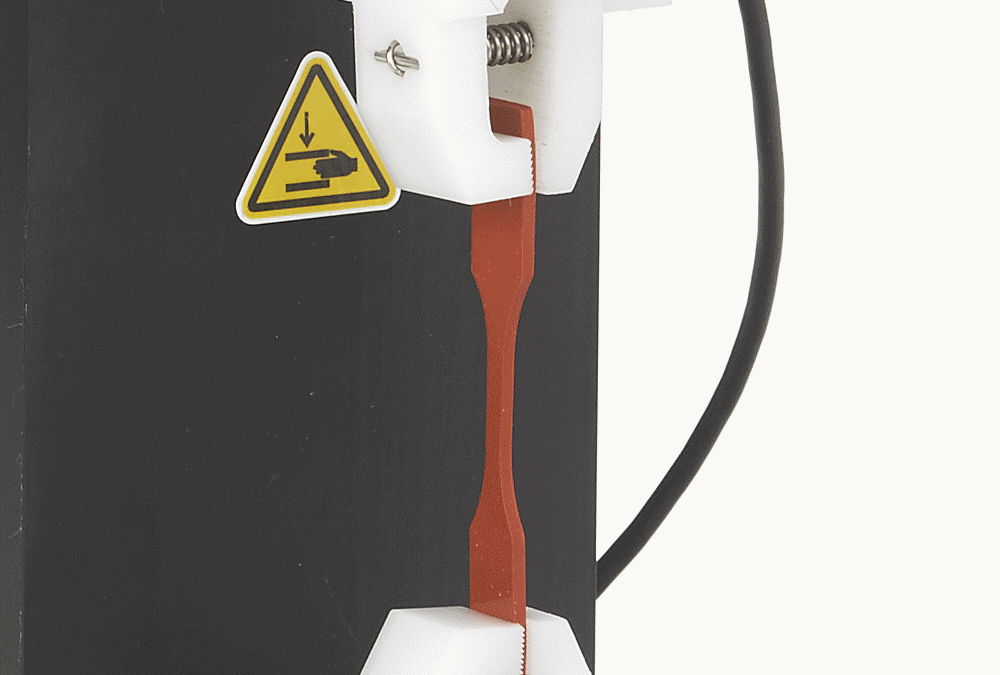Here is another post in the series called Caleb’s Corner, where our company president Caleb Horst pens some original content related to biomaterials based on his insights and experience.
Tension Testing for Biomaterials
At CellScale we have supported researchers as they develop test methods for a wide variety of biomaterials. Along the way we have picked up some tricks we would like to share.
Fixation
To pull on something, you need to be holding on. Compression grips are the most common choice. We find that spring closures are best for peak forces less than 20N. They deliver a consistent clamping force that can be tailored for have the ideal force to hold but not damage the specimen. Screw closure grips are best for peak forces greater than 100N. In the 20 to 100N range both options work well.
Generally, tissue paper works well as a gripping surface for delicate tissues, sandpaper works well for soft tissues, and metal serrated jaws work well for stiff tissues. Sometimes gluing the specimen to plastic tabs and then gripping the tabs during the test works well.
For soft rope-like tissues, a 3-point bend jig can be used to create a tension test, as the forces required to bend the tissue are negligible. This makes specimen mounting easier and the force/displacement vectors along the specimen axis can be calculated using trigonometry.
Zero Stress/Strain Determination
Many soft biomaterials are highly non-linear. Determining a displacement at which there is zero load on the specimens is difficult. In these cases, it is best to use a defined pre-load at a point where there is a measurable slope to the force/displacement curve. As a rule of thumb, the preload should be no more that 10% of the peak force.

Strain Measurement
Assuming that the grip motion directly translates into specimen deformation is never ideal. For stiffness measurements on soft materials, non-contact strain measurement is the way to go. For peak force measurements or tests with very large strains, it may not be necessary. Images are always useful for presentations and understanding anomalies that become apparent during data analysis.

Other factors
This post covers some of the most significant aspects of biomaterials testing, but there is so much more! It may be necessary to consider non-uniform specimen geometry, hydration, temperature, material non-uniformity, failure modes, preconditioning, rate dependence, fatigue, and other factors. Testing biomaterials in interesting, and there is much still to learn.
CellScale has been in this business for over 15 years so we know a thing or two, and we’d like to help! Drop me a line at [email protected].
Happy researching!
Caleb Horst
President
CellScale Biomaterials Testing
To read Caleb’s advice on taking a product to market, click here.








